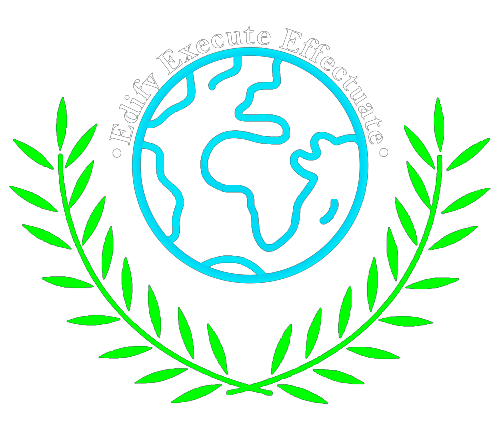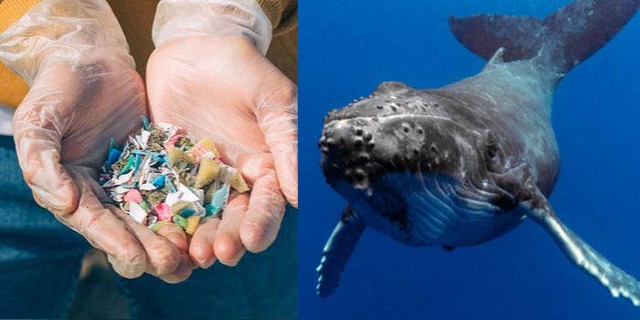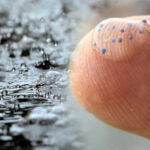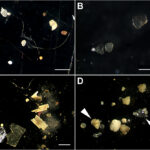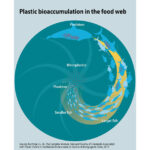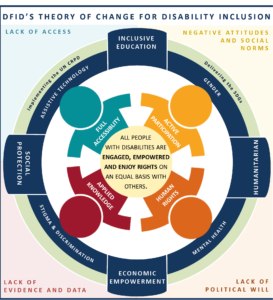Introduction
The rapid growth of the human population has led to an enormous increase in plastic waste, with plastic becoming integral to human progress (Evode et al., 2021). Despite their versatility, lightweight nature, and convenience, plastic pollution has emerged as a significant environmental challenge. The production of plastic surged from 15 million tons in 1964 to 335 million tons in 2016, and projections suggest that this figure may double within the next 20 years (Su et al., 2022). The World Economic Forum (2016) predicts that by 2050, plastics in the oceans could outnumber fish (Dowarah & Devipriya, 2019). Rivers are increasingly recognized as major conduits for plastic pollution, with studies showing that the Yangtze and Ganges Rivers are leading contributors, discharging approximately 0.33 million tons and 0.12 million tons of plastic waste per year, respectively (Sarkar et al., 2021).
Types and Sources of Microplastics
Microplastics, defined as plastic particles smaller than 5 mm, originate from both primary and secondary sources. Primary microplastics are manufactured as small particles, commonly found in cosmetics and personal care products, while secondary microplastics result from the breakdown of larger plastic debris (Horton et al., 2017). Common types of plastics include polyethylene (PE), polypropylene (PP), polystyrene (PS), and polyethylene terephthalate (PET), among others (Khalid et al., 2021). The disposal of disposable items, such as water bottles and food containers, has significantly contributed to the microplastic problem. Factors such as washing synthetic textiles, tire wear, and improper waste management exacerbate microplastic pollution, with an estimated eight million tons entering marine systems annually from land-based sources (Hu et al., 2022).
Impacts of Microplastics on Ecosystems and Human Health
Microplastics pose significant threats to aquatic ecosystems and human health. In marine environments, they can cause mortality in marine mammals and seabirds, with estimates suggesting that plastic pollution contributes to the death of 100,000 marine mammals and one million seabirds annually (Maheswaran et al., 2022a). These tiny particles can accumulate in aquatic organisms, leading to physical blockages in digestive tracts, impaired nutrient absorption, and potential starvation (Hitchcock & Mitrovic, 2019). Furthermore, microplastics can carry harmful pollutants, which may bioaccumulate through trophic transfer, ultimately impacting human consumers (Vendel et al., 2017). The long-term health effects of microplastics in humans are still under investigation, but their potential to disrupt metabolic functions and cause inflammation raises serious concerns (Lin et al., 2024). The presence of microplastics in food and drinking water further highlights the urgency for more research and intervention strategies to mitigate their impact on health and ecosystems (Blackburn & Green, 2022)
Microplastics in Recent news:
Microplastic pollution is a significant environmental issue today. A recent article published by Business Standard on August 14, 2024, highlights the alarming presence of microplastics in all brands of salt and sugar in India, whether packaged or unpackaged. These tiny plastic particles either originate from the breakdown of larger plastic items or are intentionally produced for use in various products. Unlike other materials, microplastics do not decompose easily; instead, they become smaller when exposed to sunlight. Research indicates that the concentration of microplastics in the oceans has doubled from 1993 to 2019, posing threats to marine life and human health. The environmental research organization “Toxics Link” reported that tests conducted on ten types of salt and five types of sugar, sourced from online and local markets, detected microplastics in every sample. The sizes of these microplastics ranged from 0.1 millimeter to 5 millimeters and were found in various forms, including fibers, pellets, and films.
According to the findings, the highest concentration of microplastics was found in iodized salt, with 89.15 pieces per kilogram. The overall quantity in salt samples ranged from 6.71 to 89.15 pieces per kilogram of dry weight, with organic rock salt showing the lowest at 6.70 pieces per kilogram. In sugar samples, the levels of microplastics varied from 11.85 to 68.25 pieces per kilogram, with non-organic sugar having the highest concentrations.
A PTI report studies suggest that, on average, Indians consume about 10.98 grams of salt and around ten teaspoons of sugar daily, exceeding official recommended levels.
Indians consume microplastics through sugar and salt, with calculations indicating their daily intake. For sugar, with a microplastic concentration of 11.85 to 68.25 pieces per kilogram and an average daily intake of 0.04 kg (about one spoon), the intake ranges from 0.47 pieces (minimum) to 2.73 pieces (maximum). For salt, the consumption ranges from 0.07 to 0.97 pieces, based on similar calculations.
When combining both sources, the total daily intake of microplastics for an average Indian ranges from 0.55 to 3.71 pieces. This highlights the concerning presence of microplastics in commonly consumed foods.
Microplastics In water bodies :
A recent report published by Down to Earth on April 30, 2024, warns that by the end of 2024, 217 countries are expected to release over 3.15 million tonnes of microplastics into waterways, with China, India, the United States, and Japan accounting for 51% of this pollution. India alone is projected to contribute 391,879 tonnes, making it the second-largest polluter after China. Microplastics, defined as tiny plastic particles under 5 millimeters, primarily originate from sources such as tire wear, textile shedding, and inadequate waste disposal. These microplastics can carry harmful chemicals that contaminate water bodies and pose serious health risks, including neurotoxicity, inflammation, and cancer.
In 2024, nearly 291,071 tonnes of harmful chemical additives are expected to be released into waterways, with 40% originating from China, India, Russia, and Brazil. India will discharge 31,483 tonnes of these chemicals, ranking second after China.
India’s Ganga River is notably one of the most polluted by microplastics. In 2023, India’s pollution control authority recognized the issue of microplastic contamination in water. Despite this challenge, India is actively involved in global initiatives to combat plastic pollution, including efforts to create an international plastics treaty. At a recent conference, India advocated for domestic waste management reforms and emphasized that countries should manage their own plastic waste.
While there has been some improvement in global plastic waste management, plastic waste generation continues to rise, reaching 220 million tonnes in 2023. The report concludes that relying solely on waste management will not resolve the plastics crisis.
Conclusion:
Microplastics pollution is a pressing environmental issue that poses risks to ecosystems and human health. These tiny particles, which result from the breakdown of larger plastics, are found in oceans, rivers, and soils, impacting marine life and entering the food chain. To combat this problem, we need to reduce plastic production, promote sustainable alternatives, and improve waste management. Public awareness and education are crucial in fostering responsible plastic use. Tackling microplastics is essential for safeguarding our environment and ensuring a sustainable future.
References
- Dowarah, K., & Devipriya, S. P. (2019). Microplastic prevalence in the beaches of Pondicherry, India and its correlation with fishing and tourism/recreational activities. Marine Pollution Bulletin, 148, 123–133. https://doi.org/10.1016/j.marpolbul.2019.07.066
- Singh, J., Yadav, B. K., Schneidewind, U., & Krause, S. (2024). Microplastics pollution in inland aquatic ecosystems of india with a global perspective on sources, composition, and spatial distribution. Journal of Hydrology. Regional Studies, 53, 101798. https://doi.org/10.1016/j.ejrh.2024.101798
- Horton, A. A., Walton, A., Spurgeon, D. J., Lahive, E., & Svendsen, C. (2017). Microplastics in freshwater and terrestrial environments: Evaluating the current understanding to identify the knowledge gaps and future research priorities. Science of the Total Environment, 586, 127–141. https://doi.org/10.1016/j.scitotenv.2017.01.190
- Jiang, C., Yin, L., Wen, X., Du, C., Wu, L., Long, Y., Liu, Y., Ma, Y., Yin, Q., Zhou, Z., & Pan, H. (2018). Microplastics in sediment and surface water of West Dongting Lake and South Dongting Lake: Abundance, source and composition. International Journal of Environmental Research and Public Health, 15(10), 2164. https://doi.org/10.3390/ijerph15102164
- Akdogan, Z., Guven, B., & Kideys, A. E. (2023). Microplastic distribution in the surface water and sediment of the Ergene River. Environmental Research, 234, 116500. https://doi.org/10.1016/j.envres.2023.116500
- Chen, G., Li, Y., & Wang, J. (2021). Occurrence and ecological impact of microplastics in aquaculture ecosystems. Chemosphere, 274, 129989. https://doi.org/10.1016/j.chemosphere.2021.129989
- Farooq, M., Nisa, F. U., Manzoor, Z., Tripathi, S., Thulasiraman, A. V., Khan, M. I., Khan, M. Y. A., & Gani, K. M. (2023). Abundance and characteristics of microplastics in a freshwater river in northwestern Himalayas, India – Scenario of riverbank solid waste disposal sites. Science of the Total Environment, 886, 164027. https://doi.org/10.1016/j.scitotenv.2023.164027
- Hu, B., Guo, P., Han, S., Jin, Y., Nan, Y., Deng, J., He, J., Wu, Y., & Chen, S. (2022). Distribution characteristics of microplastics in the soil of mangrove restoration wetland and the effects of microplastics on soil characteristics. Ecotoxicology, 31(7), 1120–1136. https://doi.org/10.1007/s10646-022-02561-3
- Maheswaran, B., Karmegam, N., Al-Ansari, M. M., Subbaiya, R., Al-Humaid, L., Raj, J. S., & Govarthanan, M. (2022). Assessment, characterization, and quantification of microplastics from river sediments. Chemosphere, 298, 134268. https://doi.org/10.1016/j.chemosphere.2022.134268
- Hitchcock, J. N., & Mitrovic, S. M. (2019). Microplastic pollution in estuaries across a gradient of human impact. Environmental Pollution, 247, 457–466. https://doi.org/10.1016/j.envpol.2019.01.069
- Lin, H., Schneider, F., Aziz, M. A., Wong, K. Y., Arunachalam, K. D., Praveena, S. M., Sethupathi, S., Chong, W. C., Nafisyah, A. L., Parthasarathy, P., Chelliapan, S., & Kunz, A. (2024). Microplastics in Asian Rivers: geographical distribution, most detected types, and inconsistency in methodologies. Environmental Pollution, 123985. https://doi.org/10.1016/j.envpol.2024.123985
- Vendel, A., Bessa, F., Alves, V., Amorim, A., Patrício, J., & Palma, A. (2017). Widespread microplastic ingestion by fish assemblages in tropical estuaries subjected to anthropogenic pressures. Marine Pollution Bulletin, 117(1–2), 448–455. https://doi.org/10.1016/j.marpolbul.2017.01.081
- Blackburn, K., & Green, D. S. (2021). The potential effects of microplastics on human health: What is known and what is unknown. Ambio, 51(3), 518–530. https://doi.org/10.1007/s13280-021-01589-9
